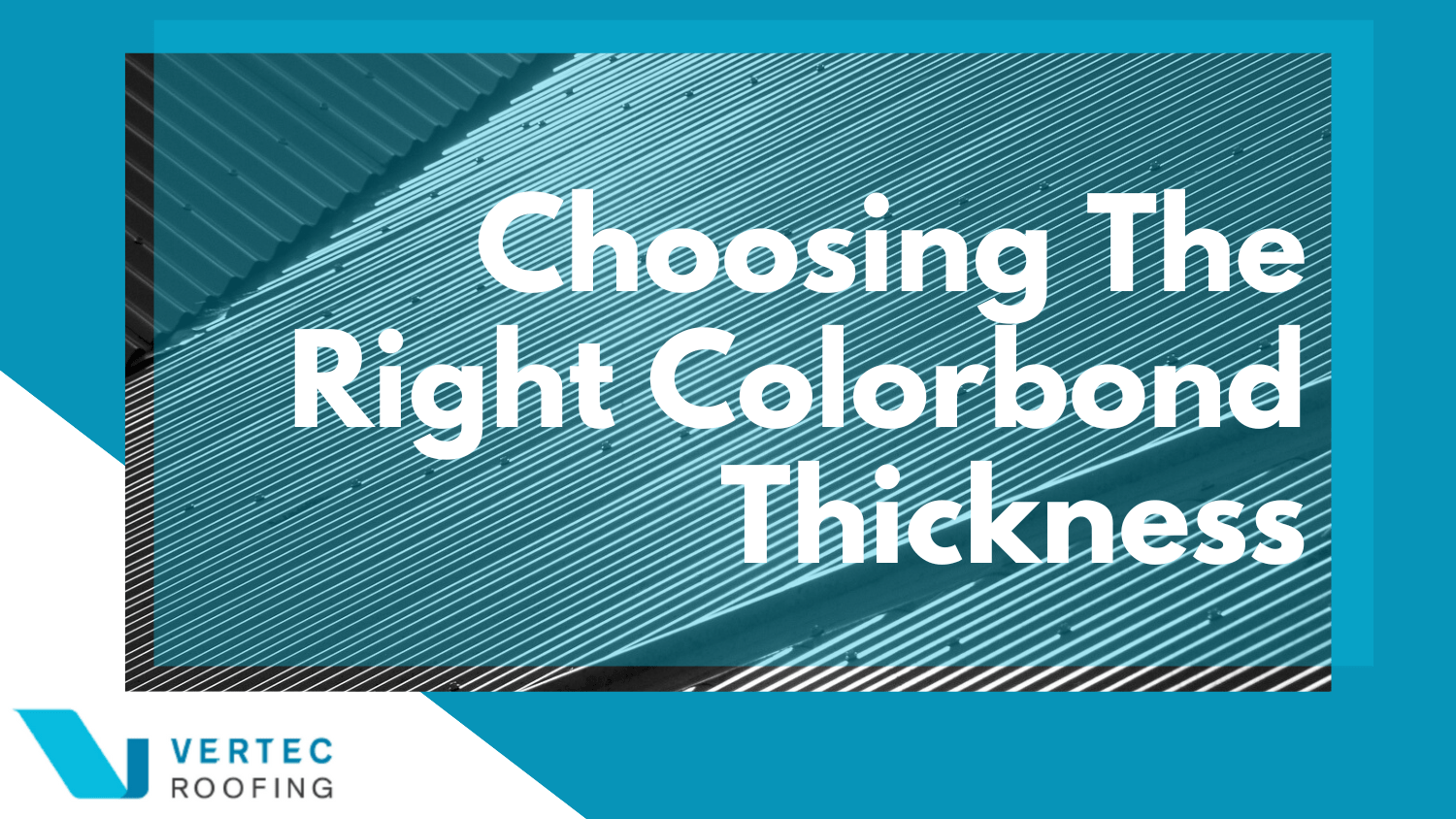

Colorbond steel has been used and loved across Australian homes for more than fifty years. Colorbond is one of the most well-known building materials and brands on the market, used across roofing materials, shed construction materials, fencing materials, walling, and cladding. Famed for its reliability and durability, Colorbond is most commonly known for providing Australia’s toughest roofs.
Beyond choosing the right Colorbond colour for your home, choosing the right Colorbond thickness is one of the most important decisions made when constructing a new roof. Offered in a range of thicknesses measured by Base Metal Thickness (BMT), the BlueScope factories produce Colorbond from 0.35 BMT to 0.70 BMT. So which Colorbond sheet thickness is right for you? Within this article, we’re going to outline the different options available and how to choose the right Colorbond roof sheet thickness for your property.

When used in roofing, these are the most common thicknesses that apply to steel:
It is important to consider that the BMT measurement is not the size of the actual thickness of the roofing sheet. BMT is the most accurate indication of the strength of the roof sheet, and the coating does very little to contribute to that. So, when you see BMT, which is the measurement used by most manufacturers, it incorporates the thickness of the base sheet of metal without the coating
Commercial and residential roofing typically require either the 0.42 or the 0.48 BMT steel. You might think there is very little separating the two (0.06mm, in fact) but when dealing with significant square meterage on larger roofs, this amount of thickness can make a difference to your bottom line.
When building, the thickness of roofing materials chosen is up to you. The thicker option will cost you more, but offers a sturdier frame. On the other hand, the thinner materials will be cheaper, but less suited to roofs in areas with wild weather or where there might be frequent “foot traffic” on it from tradies or similar.

0.42-gauge Colorbond sheet thickness is most commonly found in residential settings across Australia. For almost all homes, this level of thickness is more than capable of dealing with the weather and other external factors experienced in Australia.
For sheds and other outdoor roofing, 0.42 is more than up to the task. Where 0.42 Colorbond thickness may not be the best option, is when roof-mounted appliances are involved. For example, if you are also installing solar panels, an air conditioner, a satellite, or anything on the roof, you should be wary of who will need to climb the roof to service these additions. 0.42 BMT roofs can handle the onslaught of a hailstorm but can easily cave under the full weight of a tradie in steel-capped boots and their tools!
0.48 BMT will rarely be found in residential homes unless the circumstances mentioned previously are involved. It’s the thicker, more expensive, older brother to the 0.42 and is typically suited to industrial and larger scale projects.
The added roof sheet thickness gives them more strength and durability, making this thickness perfect for large industrial settings. The extra sheet thickness also gives the roofing the structure it needs to save on necessary roof trusses. In large warehouses, spreading out trusses further can help save on roofing costs.
These savings only apply for larger warehouses, as in smaller residential properties, the roof area is much smaller and uses cheaper roof framing.
Adding a curve to your roof shape may tick the boxes aesthetically, but unless you have the right Colorbond sheet thickness, a curved roof will be weak against the elements. Each time metal is bent, the structure is weakened. This dilemma brought about 0.60 BMT. To compensate for the adverse effect of bending the metal, 0.60 has extra vigour and sturdiness to make up for it.

With all the benefits of durable Colorbond steel, there are instances where you should look for alternatives. Avoid using Colorbond steel for:
Your chosen Colorbond thickness will mean very little if it is not taken care of or installed correctly.
Choosing the Colorbond thickness for your roof is a decision not to be taken lightly. Between the two most common thicknesses, 0.42 and 0.48, the price difference can be several thousand dollars for installation. It is important to consider what your roof needs when selecting the appropriate thickness.
For further advice on choosing your Colorbond roof sheet thickness, contact the roofing professionals at Vertec Roofing. Our team offer years of experience in installing Colorbond roofs across Canberra and Sydney – we can make an accurate and informed recommendation based on the exact needs and specifications of your project. For more information, call Vertec today on (02) 8007 4366 for your colorbond thickness enquiries in regard to re-roofing or roof maintenance.

At Vertec Roofing, we believe roofing is about protecting homes and enhancing comfort.
One Response
I like how you mentioned that understanding the colorbond thickness could offer different functions for your usage. Last night, my cousin told me that he was planning to remove their current fence due to rust and old age and replace it with a colorbond fence that could provide superior strength for safety. He asked if I had any idea what would be the best option to do. You did a great job of explaining the importance of thickness. I’ll tell him they can consult a tubular fencing contractor as they can provide more information about their fencing services.